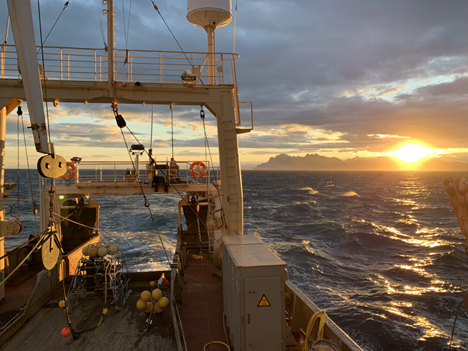- Research
- Fish tagging
- Lumpfish research
- Oceanography
- Seabed mapping
- Arnarfjörður
- Drekasvæði
- Ísafjarðardjúp
- Jökulbanki
- Jökuldjúp
- Kolbeinseyjarhryggur and adjacent area
- Kolluáll
- Langanesgrunn
- Látragrunn
- Nesdjúp
- Reykjaneshryggur and adjacent area
- Selvogsbanki
- South of Selvogsbanki
- South of Skeiðarárdjúp
- South of Skerjadjúp
- Southeast of Lónsdjúp
- Southwest of Jökuldjúp
- Suðausturmið
- Suðurdjúp
- Vesturdjúp
- East of Reykjaneshryggur
- Vestfjardarmid
- Seal research
- Whale Research
- Advice
- About
MFRI's advice on fishing opportunities for 29 fish stocks in Icelandic waters in the 2021/2022 quota year has been released
15. June 2021
MFRI's advice on fishing opportunities for 29 fish stocks in Icelandic waters in the 2021/2022 quota year has been released and is available from the MFRI website.
MFRI advises a TAC of 222 737 t of cod for the 2021/2022 fishing year. The advised TAC is a 13% decline from the current fishing year's TAC of 256 593 t. The advice is based on the management plan adopted by Icelandic authorities. There are two main reasons for the decrease:
- The 2013 (8 year) and 2016 (5 year) cohorts are small and have a substantial contribution to the decrease in the reference biomass. This is because the stock biomass mainly consists of 4-9 year old cod, an age range that now contains the smaller 2013 and 2016 cohorts.
- The stock assessment this year shows that the stock size has been overestimated in recent years. The reference biomass in 2020 was overestimated by 19% when compared to the current assessment. Measured values of older fish, both in the catch and in the surveys, have been high in recent years. The weight of younger fish, that have not fully entered the fishery, has also decreased in comparison to previous assessments. These changes have led to an assessment that follows the changes in survey indices better.
The cod stock in Icelandic waters remains very strong and the reference biomass has not been larger in 40 years. Effort directed towards the stock is at historic low levels.
The reference biomass of cod is expected to remain at a similar level until 2023 and 2024 when the 2019 and 2020 cohorts enter the reference biomass. Preliminary estimates of these two cohorts indicate that they are above average in terms of size.
According to the Icelandic management plan, the TAC for haddock in 2021/2022 will be 50 429 tonnes which is an 11% increase from the current fishing year's TAC. The reference biomass is expected to increase in the next two years. Estimations of the 2015-2017 cohort sizes are close to the long-term mean recruitment, whilst the 2018 cohort is estimated to be lower. Survey results indicate that the 2019 and 2020 cohorts are above average.
The advice for saithe, when the Icelandic management plan is applied, is 77 561 tonnes for 2021/2022 fishing year, similar to the advice for the 2020/2021 fishing year.
The 2009–2016 cohorts of golden redfish are estimated to be at a record low and SSB will decrease when these cohorts enter the fishery. When the management plan is applied, the TAC for golden redfish in the East Greenland/Iceland/Faroe Islands area in the 2021/2022 fishing year is therefore 31 855 tonnes, 17% less than for the current fishing year's TAC.
Advice for Greenland halibut increases by 13% from the previous year and is now 26 650 tonnes.
The stock size of the Icelandic summer spawning herring has increased following a period of constant decline since 2008. The decline was related to poor recruitment and the persistent infection by a protozoan parasite. The 2017 cohort is estimated to be large and will enter the reference biomass this year. The advice for the 2021/2022 fishing year, when the Icelandic management plan is applied, is 72 239 tonnes, a 104% increase from the previous fishing year's TAC.
The table below shows the MFRI advice for the 2021/2022 fishing year.

TAC recommended by the Marine and Freshwater Research Institute for the quota year 2021/2022, along with recommended and national TAC for the quota year 2020/2021 (in tonnes). Also shown is the % change in advice between quota years.

